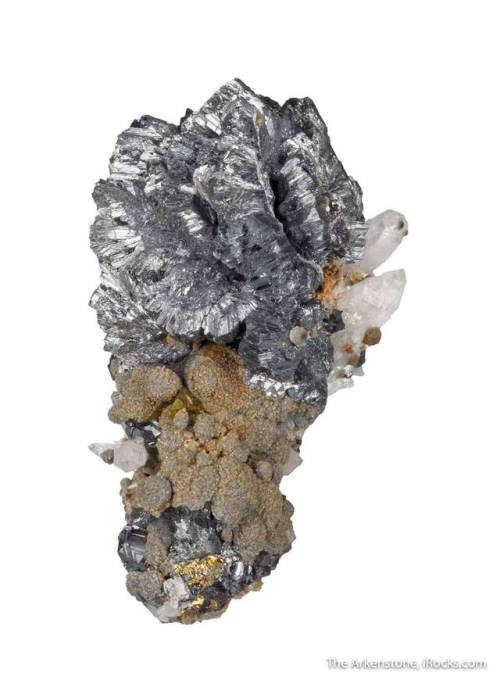SemseyiteThe metallic spray of intergrown platy crystals of this rare antimony lead sulphide is sitt
SemseyiteThe metallic spray of intergrown platy crystals of this rare antimony lead sulphide is sitting atop a matrix of Quartz and accompanied by brown hemispheres of the iron oxide Marcassite and dark black Sphalerite (see http://bit.ly/2vlsMPk), testifying to their precipitation in a vein of mineralised water that cooled to somewhere between 300 and 350 degrees Celcius, causing its load of dissolved elements to precipitate out as minerals appropriate to the ambient conditions. It was first discovered in Romania in the 1880’s (making this the type locality, from which came the , 4.7 x 2.3 x 2.3 cm example in the photo), and since then it has only turned up at a handful of sites worldwide, making it a bit of a rarity. It was named after a famous amateur mineralogist.Antimony and its minerals exist a bit of a class of their own, having odd properties at times. The native metal can have widely varying colours, including iridescent. It is what is known as a metalloid, and can fulfil either the role of the metal or that of a ligand in different minerals. Colour varies from opaque metal grey to a more oxidised black, and the mineral is soft and dense (2.5 on Mohs scale and 6 times denser than water). Other localities include Scotland, France and Turkey.LozImage credit: Rob Lavinsky/iRocks.comhttps://www.mindat.org/min-3616.htmlhttp://www.galleries.com/Semseyitehttp://bit.ly/2vLcOzZ__ -- source link
Tumblr Blog : the-earth-story.com
#mineral#crystal#antimony#sulfur#sulfide#toxic#geology#mineralogy#semseyite



